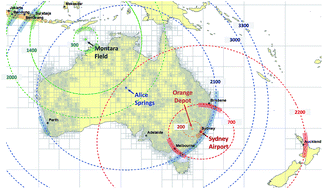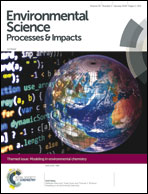Source-to-exposure assessment with the Pangea multi-scale framework – case study in Australia†
Abstract
Effective planning of airshed pollution mitigation is often constrained by a lack of integrative analysis able to relate the relevant emitters to the receptor populations at risk. Both emitter and receptor perspectives are therefore needed to consistently inform emission and exposure reduction measures. This paper aims to extend the Pangea spatial multi-scale multimedia framework to evaluate source-to-receptor relationships of industrial sources of organic pollutants in Australia. Pangea solves a large compartmental system in parallel by block to determine arrays of masses at steady-state for 100 000+ compartments and 4000+ emission scenarios, and further computes population exposure by inhalation and ingestion. From an emitter perspective, radial spatial distributions of population intakes show high spatial variation in intake fractions from 0.68 to 33 ppm for benzene, and from 0.006 to 9.5 ppm for formaldehyde, contrasting urban, rural, desert, and sea source locations. Extending analyses to the receptor perspective, population exposures from the combined emissions of 4101 Australian point sources are more extended for benzene that travels over longer distances, versus formaldehyde that has a more local impact. Decomposing exposure per industrial sector shows petroleum and steel industry as the highest contributing industrial sectors for benzene, whereas the electricity sector and petroleum refining contribute most to formaldehyde exposures. The source apportionment identifies the main sources contributing to exposure at five locations. Overall, this paper demonstrates high interest in addressing exposures from both an emitter perspective well-suited to inform product oriented approaches such as LCA, and from a receptor perspective for health risk mitigation.

- This article is part of the themed collections: Editors Choice: Planetary Health and Modeling in Environmental Chemistry


 Please wait while we load your content...
Please wait while we load your content...